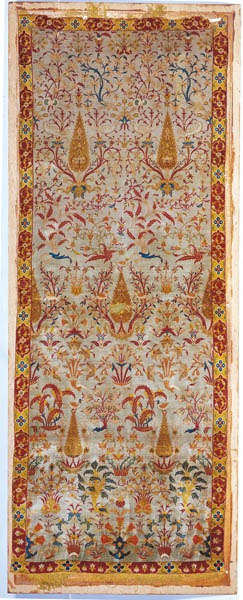In Iran, carpet weaving is a combination of art and industry and has a long history. As the name of Iran is associated with the name of carpet in the world. Carpet weaving has been common in Iran since the Hakhamaneshi era and before that and by historical evidence has not been interrupted. The oldest discovered Persian carpet belongs to the Hakhamanshi era which was founded from the frozen tombs of the Pazirik Valley (80 km from Mongolia) located in the Altai Mountains in southern Siberia and is preserved in the Russian Hermitage Museum.
In the carpets and handwoven rug section of the Museum of Lady Fatima Masuma (PBUH), some of the carpets are special and universally important. Silk carpet is one of the oldest and biggest ones that belong to Safavid era and was woven by Master Nematollah Joshghani for the tomb of Shah Abbas II in 1671 AD. This exquisite carpet consists of 14 pieces which two of them were used as tombstones. The carpet was delivered to the Museum of the Holy Shrine coincided with expansion and developing new sections in the Shrine of Lady Fatima Masuma (PBUH). Now, it has been more than eight decades since the carpet was handed over to the Museum of the Holy Shrine. This exquisite carpet consists of two semicircles that were spread on both sides of the tomb of Shah Abbas II. The approximate space of the sum of the two pieces is about 58 square meters and the sum of the two semicircles is 820 * 820. This full silk carpet with 1mm thickness has 100 rows and the design on it shows the stages of plant growth. There were 12 other pieces of this carpet, including 10 rectangular pieces and eight octagonal pieces. Also, octangular pieces are also considered as a historical document on which date, place, and name of the master have been woven on the carpet. There is a free space between two halves in the inner part which is totally 2m and 58 cm, that is the place where the grave of King Abbas II was installed.


